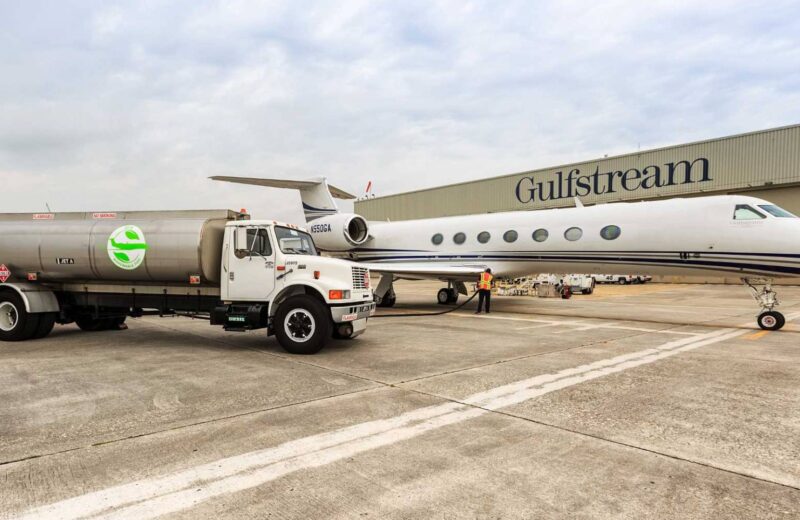SAF blender’s tax credit ‘will boost SAF production’

The sustainable aviation fuel (SAF) blender’s tax credit – recently released as part of the Made in America Tax Plan – would incentivise traditional fossil-based refiners to turn their refineries, or co-process this with SAF, Tim Obitts, president and CEO, National Air Transportation Association (NATA), told Corporate Jet Investor
It will also incentivise those US-based producers who make renewable diesel to take the extra step in the distillation process and turn it over to SAF. This will put the cost of SAF closer to parity with fossil-based fuel, he said.
The Made in America Tax Plan is one of the ways the Biden-Harris administration is furthering clean energy production in the US.
“The president’s plan includes a blender’s tax credit for sustainable aviation fuel, enabling the decarbonisation of a key portion of the US transportation sector,” reads the plan. “Innovation in these areas could have large spillover benefits to our industrial sector as well as to global efforts to address climate change.”
The plan outlines that SAF refiners stand to gain $2 tax credit per gallon. This was previously at $1 per gallon. The proposed blender’s tax credit is ‘feedstock neutral’, providing flexibility for new pathways – such as algae and plant biomass – under development.
Obitts said: “The $2 credit per gallon would entice other refiners to switch to using renewable feedstock to produce the neat SAF versus using fossil-based fuel. It helps reduce their costs.”
He said business aviation has the capability to influence a change in the right direction.
“A few years ago, we managed to get $1 per gallon credit retroactively. But we need a $2 per gallon blender’s tax credit to boost production of SAF. This was separate from the sustainable diesel.”
Renewable diesel blenders
Obitts said producers of renewable diesel also will also benefit from this, because “all they have to do is one more part of the distillation process to convert the renewable diesel into jet A-1.” This way there will be a vast increase in production.
He says the blender’s credit scheme will address the issue of supply. “We have spent a lot of time educating the industry and now there is a lot of demand [for SAF] but not enough supply.”
Policy groups such as the NATA are willing to make longer term offtake agreements – to secure the market for its future outpute – therefore guaranteeing financial stability for these companies.
Obitts drew parallels with the Low Carbon Fuel Standard in California, where road diesel gets taxed at 78c a gallon, but renewable diesel is not taxed. Users of renewable diesel often get their money back.
“As a result, renewable diesel is a lot cheaper in California than fossil-based diesel. That’s why this blender’s credit is so important. It doesn’t impose a carbon tax.”
Volume and investment
Volume of SAF produced and investment in the sector are two solutions offered by Obitts.
“With more investment, the price of the feedstock will reduce and the technology will make it cheaper to refine,” he said.
NBAA president and CEO, Ed Bolen said: “We are encouraged to see the administration’s support for the performance-based SAF blender’s tax credit, which will incentivise production and help level the playing field with renewable ground transportation fuels. Through increased SAF production, this next generation drop-in fuel has the potential to help our industry meet its aggressive sustainability goals.”
The association is a member of a broad coalition of groups, representing every segment of the nation’s civil aviation industry, that is actively supporting legislation to establish a SAF-specific blender’s tax credit. Obitts and the NATA are part of this too. Learn more about the Business Aviation Coalition for Sustainable Aviation Fuel.
In a recent letter to Transportation secretary, Pete Buttigieg, and other administration officials, the group expressed support for a $1.50 per-gallon credit for production of SAF, with a demonstrated lifecycle Greenhouse Gas (GHG) reduction of at least 50% compared with conventional jet fuel. An additional 10 cent-per-gallon credits would be available for every 10% reduction above 50%, capped at a $2.00 credit per-gallon of SAF with a demonstrated 100% GHG reduction.
On the consumer side, Obitts says sustainability is still not one of the top priorities. Although the pandemic has brought in a great number of new buyers, particularly individuals who have never flown privately before, “safety, security and convenience for their families: that’s why they are buying the planes”.
